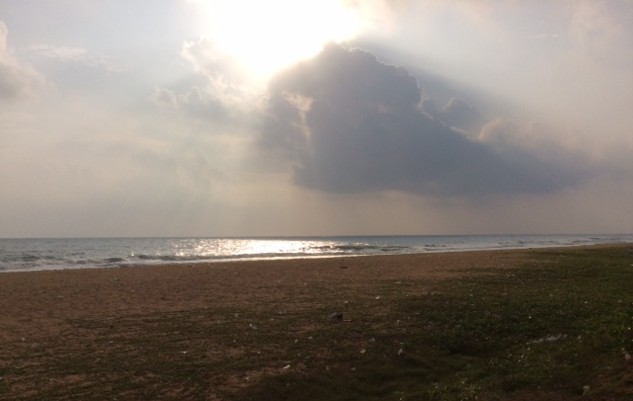Earlier this week, the UN Human Rights Council agreed to Prince Zeid’s request to defer consideration of his office’s investigation into the end of the conflict in Sri Lanka to the summer. The UK was a main sponsor of the resolution setting up the investigation and we remain committed to it.
Those who provided information to the investigation – and especially those who did so in the face of intimidation – may find the delay difficult to accept. But it was the right thing to do: the new Sri Lankan government has committed itself to a change in approach towards domestic accountability, reconciliation and cooperation with the UN. Progress on these issues is essential to addressing the legacy of the conflict, and to building the strong, independent domestic institutions necessary to address the grievances and needs of the many victims of violations over many years in Sri Lanka.
I’m just back from a few days in the Vanni, my first opportunity to visit this former LTTE stronghold and the theatre for the last weeks of the conflict in 2009. Unlike in the rest of Sri Lanka, it is impossible to ignore how recent the end of the conflict was and how raw some of the scars remain. Shuttling along the – now excellent – roads, I still saw many buildings with shell and gunfire damage. There are really a lot of military memorials. The LTTE’s former killing power is also clear to see.
It’s not so easy to find private businesses operating, though army welfare shops are everywhere. It’s obvious why many people complain that they are undermining small scale shop keepers. Determined to support the local economy, we checked into a private guest house in Mullaitivu. Five minutes later, I was supporting the local economy still further by investing in a set of new sheets and rubber flip flops. Sometimes you pay for your principles… The local restaurant was excellent, though, and well patronised. There are some visionary companies like MAS operating in the Vanni, providing much needed jobs and helping to create a culture of labour. It is excellent news that a couple of others are now taking the plunge – the Vanni needs more investment, large and small – and that Foreign Minister Mangala has said that the army is withdrawing from civilian activities.
The need to grieve and to know what happened to missing loved ones remains overwhelming. I met ex-combatants who were socially and economically excluded. Promised releases of political prisoners are slower than people would like. I also met several of our project partners and members of civil society: people and organisations working on issues from governance to domestic violence to youth empowerment. The British Government will be spending over £2 million next year to support reconciliation and reform. The needs remain significant, but, as ever, it was inspiring to hear our partners’ stories and commitment. And it was reassuring, too, to hear accounts of how responsive the police had been to reports of electoral malpractice in January.
My visit coincided with the Sri Lankan Government’s decision to release over 1,000 acres of land in the Palali High Security Zone in Jaffna. When fully implemented, this will be a very welcome development, allowing people to return to their livelihoods and move into a more sustainable period of their lives. It will also then be an example of the government of Sri Lanka having responded to the needs of victims. They have a window now to demonstrate this kind of commitment, to enable further information exchange, and to work with the broadest possible spectrum of civil society groups, domestic and international actors on reconciliation and accountability.
I want to finish with a wholly optimistic image, symbolic of wider hope for the North. At the recent Classic Car Club of Ceylon’s British Day, I met an extraordinary Jaffna survivor.
This 1920s Morgan, only the 25th car ever to be registered in Jaffna, was discovered in pieces in a shed at the end of the conflict. Patience, understanding and painstaking attention to detail have put her back on the road, better than new.

